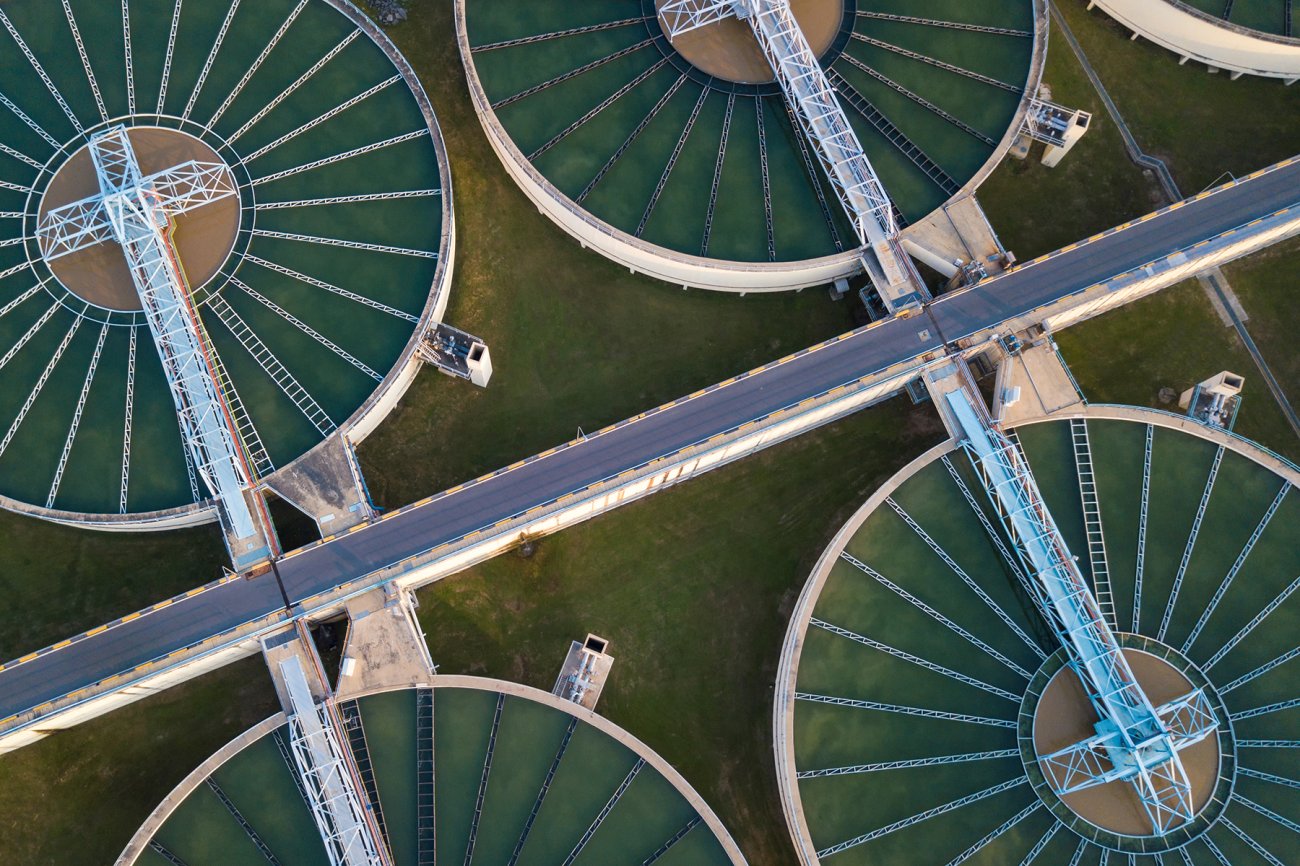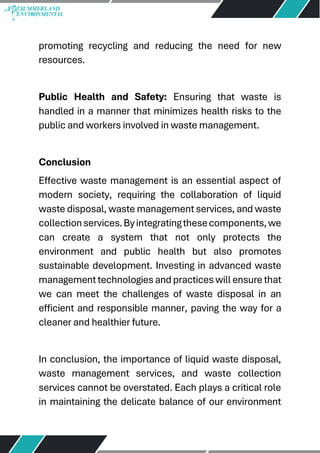The Of Reclaim Waste
Table of ContentsThe smart Trick of Reclaim Waste That Nobody is Talking AboutFascination About Reclaim WasteExamine This Report about Reclaim WasteThe Main Principles Of Reclaim Waste Things about Reclaim Waste
Discover the types, occurrences, and types of liquid waste. Residential sewer waste describes the waste and products from a domestic sewage-disposal tank. This sort of waste is produced by humans in houses, schools, and other structures. This only includes sewage-disposal tanks that have a drain area. The appropriate management and disposal of domestic sewage waste call for liquid waste to be moved to a sewer treatment plant where the proper methods and tools are related to purify and dispose of waste.
Commercial waste often includes potential risks, such as combustible materials or a combination of liquid and solid waste items, and needs a much more advanced and in-depth disposal procedure. The disposal of commercial waste typically includes the purification of waste before transportation to make sure risk-free and proper disposal. Industrial waste is developed from by-products and runoff of industrial procedures and production.
This type of waste can not make use of the very same sewage administration transportation or processes as septic or business liquids. The commercial waste management process requires the evaluation and screening of fluid waste before it goes through the disposal process (liquid waste disposal). Runoff waste is the fluid waste that originates from drainage and excess stormwater in extremely populated areas or cities
Overflow waste can create contamination and flooding if not dealt with properly. Learn extra about sewer cleaning and waste monitoring. Guaranteeing correct waste management can avoid catastrophes and lower environmental harm. Both individuals in household settings and experts in industrial or production markets can take advantage of understanding the procedures and policies of liquid waste management.
Some Ideas on Reclaim Waste You Should Know
Contact PROS Solutions today to find out concerning our waste administration and disposal solutions and the appropriate means to take care of the liquid waste you create.
(https://linktr.ee/leonaube33101)This so-called 'wastewater' is not only an essential resource yet, after therapy, will be launched to our land, waterways or the sea. Utilized water from bathrooms, showers, baths, cooking area sinks, laundries and commercial procedures is known as wastewater.

water made use of to cool equipment or tidy plant and equipment). Stormwater, a kind of wastewater, is runoff that flows from farming and city locations such as roofings, parks, yards, roads, paths and gutters right into stormwater drains pipes, after rainfall. Stormwater moves untreated directly to local creeks or rivers, ultimately getting to the sea.
Reclaim Waste - The Facts
In Queensland, the majority of wastewater is treated at sewer therapy plants. Wastewater is transported from residential or industrial websites via a system of drains and pump stations, known as sewerage reticulation, to a sewage treatment plant. City governments construct, keep and operate most sewer therapy plants. Operators are licensed under the Environmental Security Act 1994 to discharge treated wastewater at an appropriate ecological criterion into rivers.
The Department of Natural Resources encourages neighborhood federal governments regarding handling, operating and maintaining sewerage systems and therapy plants. In unsewered areas, city governments may need owners to mount individual or home sewage treatment systems to treat residential wastewater from toilets, cooking areas, bathrooms and washings. The Department of Natural Resources authorises the use of household systems when they are shown to be reliable.
The majority of stormwater gets no treatment. In some brand-new class, treatment of some stormwater to eliminate trash, sand and gravel has begun utilizing gross toxin traps. Wastewater treatment happens in four stages: Gets rid of solid issue. Larger solids, such as plastics and various other things incorrectly released to sewers, are eliminated when wastewater is gone through screens.
Wastewater after that moves into big tanks where solids clear up and are gotten rid of as sludge. Grease and residue are skimmed from the surface. Utilizes small living microorganisms called micro-organisms to damage down and eliminate remaining liquified wastes and great fragments. Micro-organisms and wastes are integrated in the sludge. Removes nitrogen and phosphorus nutrients that could trigger algal blossoms in our waterways and endanger water life.
The Ultimate Guide To Reclaim Waste
Nutrient elimination is not available at all sewage therapy plants because it requires expensive specialized tools. It is becoming more usual in Queensland. Clear fluid effluent generated after therapy may still include disease-causing micro-organisms. If this effluent is released into rivers such as rivers or the sea, the micro-organisms will at some point pass away out.

This generally means wastewater has actually to be treated or contaminants eliminated before it can be released to rivers. The majority of wastewater flows right into the sewerage system. Under the Act, neighborhood governments administer authorizations and licences for environmentally read this post here relevant tasks (ERAs) entailing wastewater releases that could have a regional impact. The department carries out approvals and permits to ERAs entailing wastewater releases that might have a regional or statewide effect.
What Does Reclaim Waste Do?
Or else, examples are taken for laboratory analysis. Usually many examinations are needed to establish the levels of each of the various contaminants such as oils, heavy steels and chemicals in water. Tracking gives valid information concerning water quality and can confirm that permit conditions are being met. The details obtained with surveillance provides the basis for making water top quality choices.